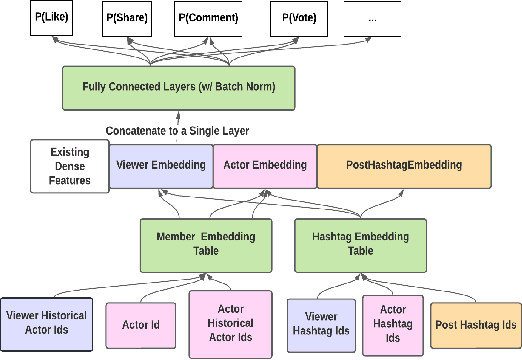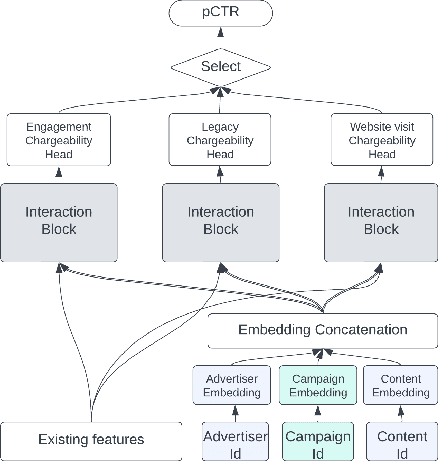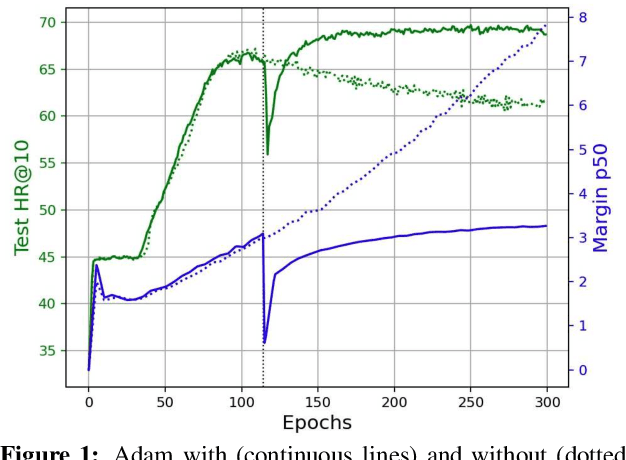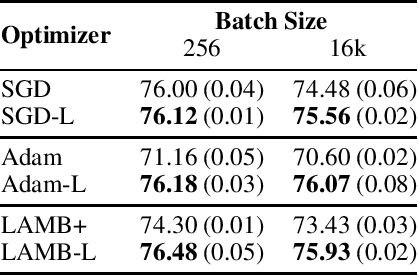Mingzhou Zhou
LiNR: Model Based Neural Retrieval on GPUs at LinkedIn
Jul 18, 2024



Abstract:This paper introduces LiNR, LinkedIn's large-scale, GPU-based retrieval system. LiNR supports a billion-sized index on GPU models. We discuss our experiences and challenges in creating scalable, differentiable search indexes using TensorFlow and PyTorch at production scale. In LiNR, both items and model weights are integrated into the model binary. Viewing index construction as a form of model training, we describe scaling our system for large indexes, incorporating full scans and efficient filtering. A key focus is on enabling attribute-based pre-filtering for exhaustive GPU searches, addressing the common challenge of post-filtering in KNN searches that often reduces system quality. We further provide multi-embedding retrieval algorithms and strategies for tackling cold start issues in retrieval. Our advancements in supporting larger indexes through quantization are also discussed. We believe LiNR represents one of the industry's first Live-updated model-based retrieval indexes. Applied to out-of-network post recommendations on LinkedIn Feed, LiNR has contributed to a 3% relative increase in professional daily active users. We envisage LiNR as a step towards integrating retrieval and ranking into a single GPU model, simplifying complex infrastructures and enabling end-to-end optimization of the entire differentiable infrastructure through gradient descent.
LiRank: Industrial Large Scale Ranking Models at LinkedIn
Feb 10, 2024



Abstract:We present LiRank, a large-scale ranking framework at LinkedIn that brings to production state-of-the-art modeling architectures and optimization methods. We unveil several modeling improvements, including Residual DCN, which adds attention and residual connections to the famous DCNv2 architecture. We share insights into combining and tuning SOTA architectures to create a unified model, including Dense Gating, Transformers and Residual DCN. We also propose novel techniques for calibration and describe how we productionalized deep learning based explore/exploit methods. To enable effective, production-grade serving of large ranking models, we detail how to train and compress models using quantization and vocabulary compression. We provide details about the deployment setup for large-scale use cases of Feed ranking, Jobs Recommendations, and Ads click-through rate (CTR) prediction. We summarize our learnings from various A/B tests by elucidating the most effective technical approaches. These ideas have contributed to relative metrics improvements across the board at LinkedIn: +0.5% member sessions in the Feed, +1.76% qualified job applications for Jobs search and recommendations, and +4.3% for Ads CTR. We hope this work can provide practical insights and solutions for practitioners interested in leveraging large-scale deep ranking systems.
Logit Attenuating Weight Normalization
Aug 12, 2021



Abstract:Over-parameterized deep networks trained using gradient-based optimizers are a popular choice for solving classification and ranking problems. Without appropriately tuned $\ell_2$ regularization or weight decay, such networks have the tendency to make output scores (logits) and network weights large, causing training loss to become too small and the network to lose its adaptivity (ability to move around) in the parameter space. Although regularization is typically understood from an overfitting perspective, we highlight its role in making the network more adaptive and enabling it to escape more easily from weights that generalize poorly. To provide such a capability, we propose a method called Logit Attenuating Weight Normalization (LAWN), that can be stacked onto any gradient-based optimizer. LAWN controls the logits by constraining the weight norms of layers in the final homogeneous sub-network. Empirically, we show that the resulting LAWN variant of the optimizer makes a deep network more adaptive to finding minimas with superior generalization performance on large-scale image classification and recommender systems. While LAWN is particularly impressive in improving Adam, it greatly improves all optimizers when used with large batch sizes
 Add to Chrome
Add to Chrome Add to Firefox
Add to Firefox Add to Edge
Add to Edge